Composers / Fryderyk Chopin / Places catalog
Poturzyn
Tytus Woyciechowski was one of Fryderyk Chopin’s closest friends in Warsaw. He was two years older than Fryderyk, stayed at the Chopins’ boarding house, and went to the Warsaw Lyceum. The closeness of this friendship is evidenced by the fact that Chopin dedicated to him one of his early works, the Variations in B major on ‘Là ci darem la mano’ from Mozart’s opera Don Giovanni, Op. 2, for piano and orchestra. It is worth noting that when the famous composer and music critic Robert Schumann became acquainted with this work, he wrote ‘Hats off gentlemen! A genius!’
The Woyciechowskis purchased the Poturzyn estate, in the south-east of Poland, from Countess Teodora Ostrorożyna in 1804. When Tytus’s mother died, in the summer of 1829, he was forced to assume the responsibilities of managing the inherited Chełm Land property (his father had died in 1811). Apart from Poturzyn, the estate comprised the villages of Żabcze, Witków and Wólka Poturzyńska.
The two friends maintained a lively correspondence after Woyciechowski left Warsaw. Chopin wrote long letters that recounted current events and repeated anecdotes he had heard, but most importantly confided his secrets and the doubts that gnawed away at him. Unfortunately, it is not known what became of the letters Woyciechowski wrote to Chopin.
Chopin decided to set off for Poturzyn in the summer of 1830, as he could no longer bear being separated from his friend. His journey probably took him through Piaseczno, Czersk, Góra, Ryczywół, Kozienice, Puławy, Końskowola, Lublin, Krasnystaw, Zamość, Komarów and Oszczów. His friend put him up at the Woyciechowski family manor around 14–21 July 1830. This eighteenth-century brick building was situated near a beautiful landscape park and a small pond.
The house had a dozen or more rooms on the ground floor and several more rooms upstairs. There were numerous farm buildings nearby. The two friends spent their free time engaging in long discussions, playing music together, hiking around the area and having fun (we know that Chopin learned to shoot with a crossbow and ride a horse). It was here they planned the joint trip they made to Vienna in November that year.
Chopin mentioned his happy stay in Poturzyn in a letter he wrote to Woyciechowski upon returning to Warsaw: ‘I tell you sincerely that it is pleasant to recall all of this – your fields left in me some sort of longing, that birch under the windows just will not leave my memory’. In another letter, he wrote, in his typical jocular manner, ‘If I won’t have anything to eat you’ll have to take me on in Poturzyn as a clerk; I’ll live there next to the stable, as well with you as I did this year at the manor’.
Yet Chopin’s stay in Poturzyn was not a purely social affair. The young composer was able to acquaint himself with the local Ukrainian folk music. Some Chopin scholars are of the opinion that this had a significant impact on his creative output.
Woyciechowski was one of the pioneers of the Polish sugar industry. The first sugar factory in the Lublin region was built on his estate in 1840, although it was destroyed by fire six years later (on Friday 13 November). It was rebuilt in 1847 with the financial support of the local landowners and went back into production, employing 44 people in the 1850s and over 400 in 1880. Woyciechowski invested in infrastructure as well as in his sugar factory. A worker’s estate, a storeroom, a forge, a stable, a mill, and the first railway in the Lublin area (1877) were all built on his initiative. The railway was horse-drawn and connected Poturzyn with Kryłów. Woyciechowski doubled the value of his inheritance thanks to his administrative flair. It is worth mentioning that he also initiated Poland’s first sugar manufacturers’ conference in Warsaw (17 June 1847). That conference has been held annually ever since.
Woyciechowski’s son Władysław purchased the entire estate from him sometime before 1879. The property remained in the Woyciechowski family until 1899, when it was sold to Wincenty Rulikowski, Castellan of Belz. The last owners of these lands were Rulikowski’s son Włodzimierz and his wife Jadwiga, née Stadnicki.
Not much remains of Poturzyn from the time when Chopin stayed there. The manor burnt down in the 1940s and the park fell into disrepair over time. Only the remains of the farm buildings (including the old coach house) and the sugar factory (remnants of the foundations and the red brick wall) have survived. A bas-relief by Jan Bulewicz in the local Fryderyk Chopin primary school commemorates the composer’s stay there. The inscription reads: ‘In memory of Fryderyk Chopin, who stayed in Poturzyn with his friend Tytus Woyciechowski in 1830. Chopin held the songs of the people here in his heart when he left the country forever soon afterwards. PKZ Zamość 1985.’
When visiting Poturzyn, it is worth seeing the stone sculptures by Warsaw artist Konstanty Hegel, who also made the Mermaid of Warsaw monument in Warsaw’s Old Town and the sculptural decoration in the capital’s Grand Theatre. One is a life-size figure of Christ Blessing, from 1842, that originally stood in the manor grounds. Another stands in a small cemetery on the road to Witków and Tyszowce. This one is of Our Lady of the Immaculate Conception and bears the inscription: ‘This memorial is dedicated to the memory of a deceased daughter by her parents, who plead for the peace of her soul with a pious sigh. 1860’. The residents of Poturzyn maintain that the seventeen-year-old daughter of Tytus Woyciechowski, Maria, died of snake bite or was killed in the surrounding woods. She was buried in the manor grounds in Poturzyn. After the First World War, the figure was moved to a recently opened military cemetery (est. 1914). Local tradition has it that Woyciechowski’s tragically deceased daughter is buried at the foot of the statue.
The single-aisle Church of St Barbara, rebuilt in 1950–1953, and the Woyciechowski family grave, where Tytus, his wife Alojza and their youngest son Władysław are buried, are in nearby Oszczów.
-

Chopin memorial monument. Phot. Zbigniew Czernik. (creative commons)
-

Monor in Poturzyn. Phot. Michael Noble.
-
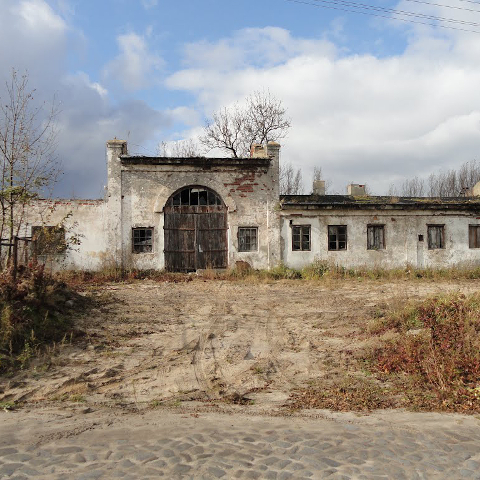
Old carriage house. Phot. Mirosław Jaremczuk.
-
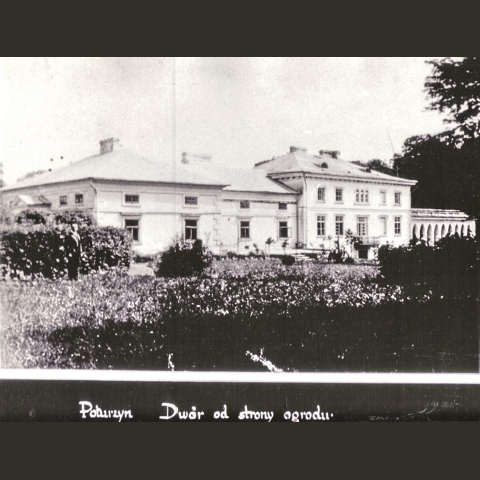
Poturzyn, manor from the garden. Phot. Michael Noble.
-

Poturzyn. Phot. Mirosław Jaremczuk.
-
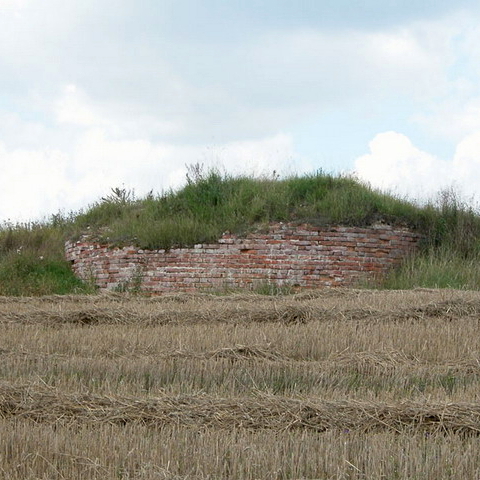
Remains of the sugar factory once erected by Tytus Wojciechowski.
-
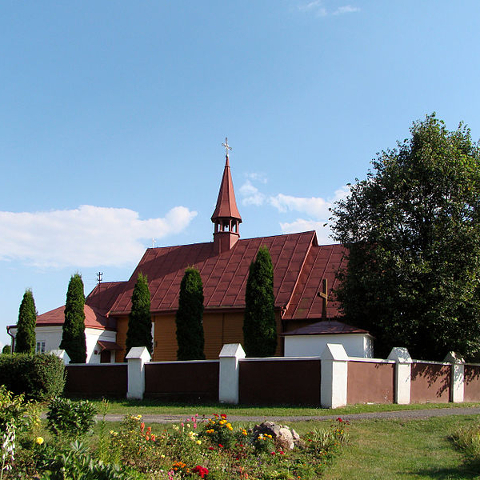
St Barbara Church in Oszczów. Phot. Przemysław Czopor. (creative commons)
-
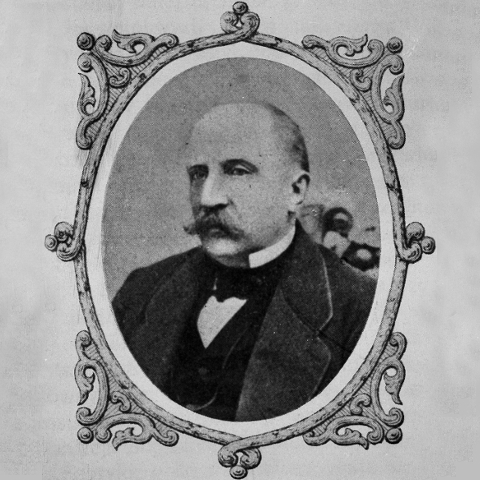
Tytus Woyciechowski. Fryderyk Chopin Museum.